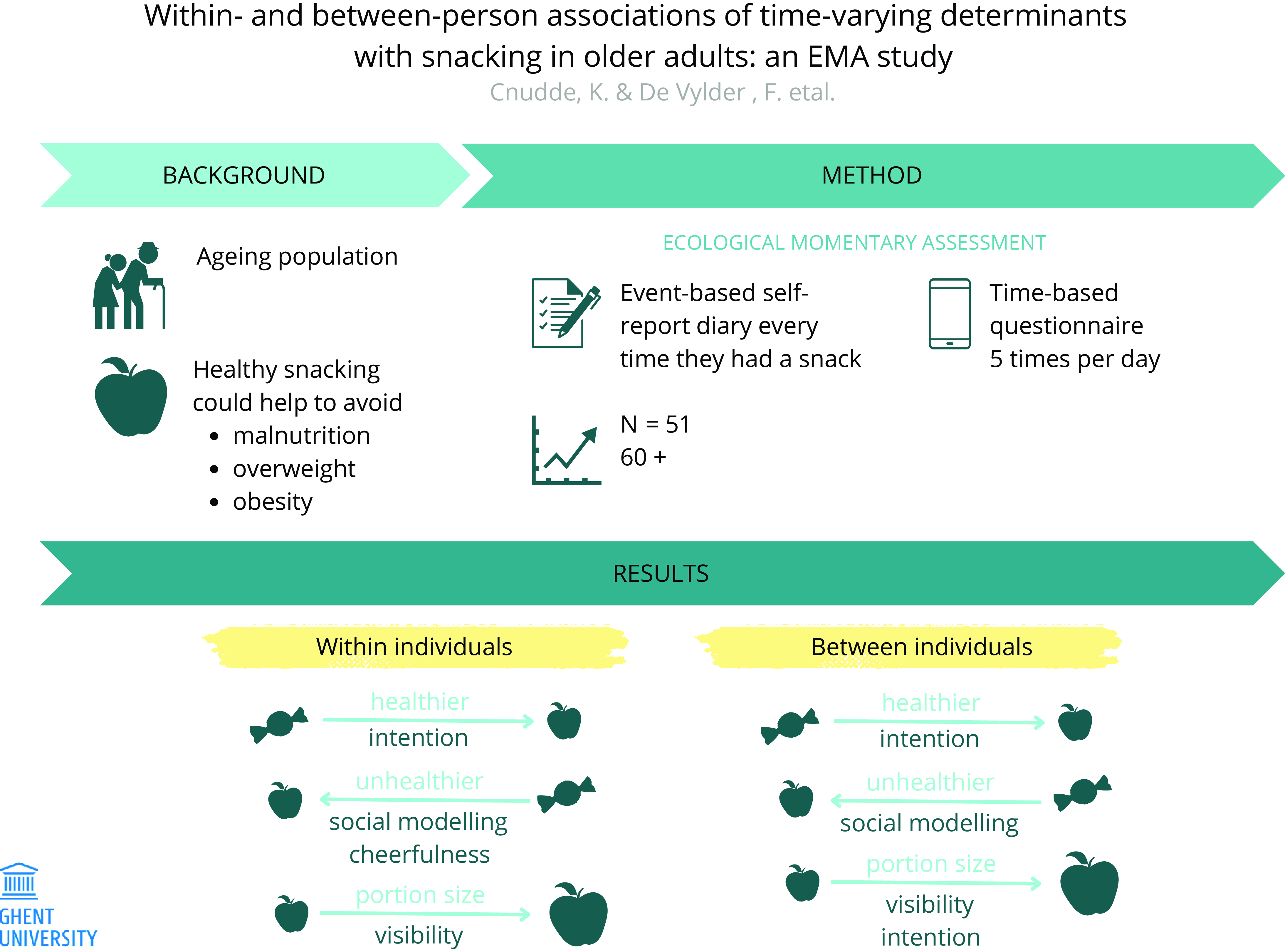Published online by Cambridge University Press: 20 May 2024

Promoting healthy snacking is important in addressing malnutrition, overweight and obesity among an ageing population. However, little is known about the factors underlying snacking behaviour in older adults. The present study aimed to explore within- and between-person associations between determinants (i.e. intention, visibility of snacks, social modelling and emotions) and snacking behaviours (i.e. decision to snack, health factor of the snack and portion size) in older adults (60+). Conducting a two-part intensive longitudinal design, data were analysed from forty-eight healthy older adults consisting of (1) an event-based self-report ecological momentary assessment (EMA) diary every time they had a snack and (2) a time-based EMA questionnaire on their phone five times per day. Analysis through generalised linear mixed models indicated that higher intention to snack healthily leads to healthier snacking while higher levels of social modelling and cheerfulness promote unhealthier choices within individuals. At the between-person level, similar results were found for intention and social modelling. Visibility of a snack increased portion size at both a within- and between-person level, while the intention to eat a healthy snack only increased portion size at the between-person level. No associations were found between the decision to snack and all determinants. This is the first study to investigate both within- and between-person associations between time-varying determinants and snacking in older adults. Such information holds the potential for incorporation into just-in-time adaptive interventions, allowing for personalised tailoring, more effective promotion of healthier snacking behaviours and thus pursuing the challenge of healthy ageing.
These authors contributed equally to this work (co-first authors).